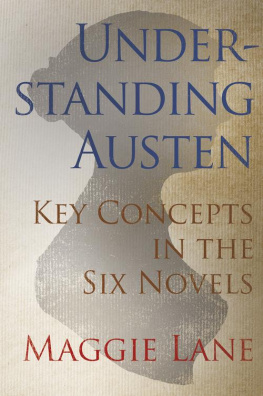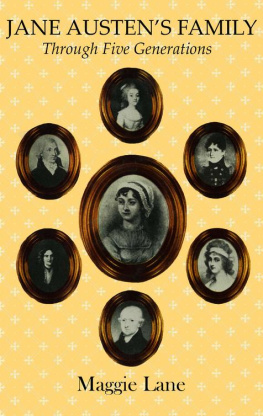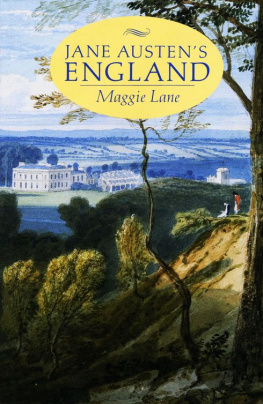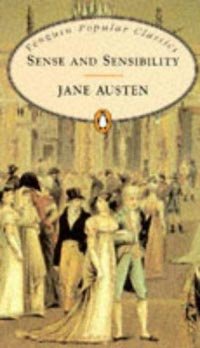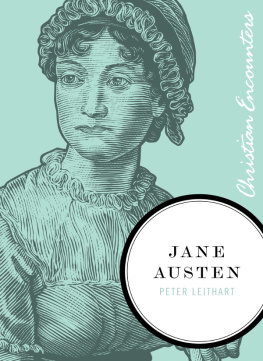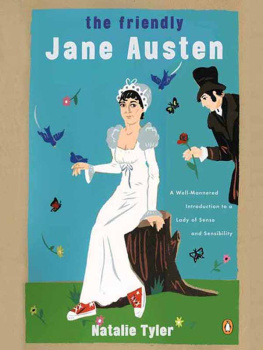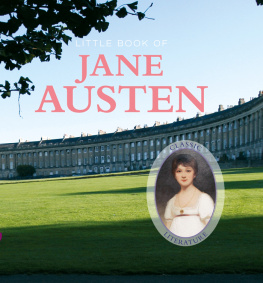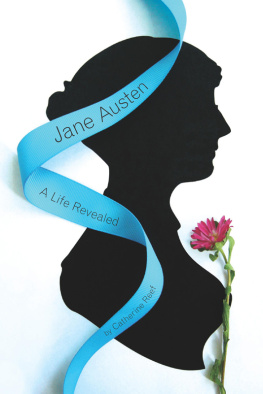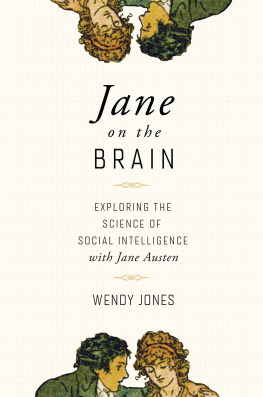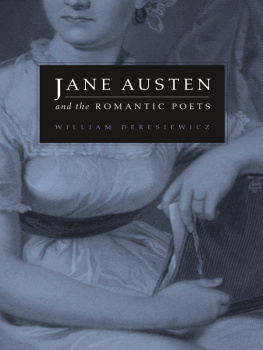W HEN, AS A child, Jane Austen wrote her spoof History of England to amuse her family, having insisted on the title page that it was by a partial, prejudiced and ignorant historian, she added, N.B. There will be very few dates in this work. As a mature writer, she might with equal truth have promised that there would be very few concrete terms in her novels. Descriptions of clothes, faces, meals, houses and journeys are scanty. The few such details that she does vouchsafe are endowed consequently with a huge significance, and are pored over and committed to memory by her avid readership. The world seems full of people who can tell you exactly what Henry Crawford and William Price ate for breakfast on the day of their journey to London, or which heroines best gown was white with glossy spots. (In fact Mastermind soon learnt to forbid the life and work of Jane Austen as a specialist subject, too many potential contenders being too well versed in its minutiae.)
Unlike her contemporary Walter Scott or the great Victorian novelists like Dickens and George Eliot, Jane Austen does not attempt to conjure up a visual world, leaving most of that to our own imagination (or to the filmmakers who would recreate it so beguilingly). But this minimalistic approach betrays no failure of imagination on Jane Austens part. Her creed was consistent from youth to maturity. In a letter of 9 September 1814, at the height of her own success, she advised her niece Anna, who was attempting to write a novel and had sent the opening chapters for criticism, You describe a sweet place, but your descriptions are often more minute than will be liked. You give too many particulars of right hand & left.
Reliance on a vocabulary of abstract nouns and their related adjectives was her preferred mode, and it served her well. Her subject is the relationships between men and women, and their struggles to identify and live a good life. Physical details are largely superfluous to this purpose, but the finer points of character and behaviour require a generally accepted lexicon of moral and humane values. As a consequence her stories have a timeless quality, while yet being rooted in a very specific and long-since disappeared society a curious paradox, and part of her unique magic. While other novelists of the eighteenth and nineteenth centuries may seem longwinded to the modern mind, their treasures having to be hunted down among the verbiage, Jane Austens sentences spring as freshly and succinctly off the page for us as they did for their first delighted readers. That is why she appeals to a general readership as much as to an academic one; the pleasures of reading Jane Austen and the levels on which she may be read and reread are inexhaustible.
Nevertheless, there is a danger, as years pass and manners and morals subtly change, of our losing both the certainties and the nuances she conveyed to her own generation and those which followed. There has, perhaps, been a greater change in mindset in the last fifty years than in the one hundred and fifty years preceding. The purpose of the present study is to illuminate Jane Austens meaning when the passage of time might have partially obscured it and to demonstrate the spectrum of values she attaches to important abstract nouns. Her philosophy and deepest-held convictions are embedded in this group of words and we get most out of her books if we grasp their full meaning. For all her lightness of touch, Jane Austen is a didactic writer, setting out not only to entertain but to show in action and recommend the values she had absorbed from the Christian tradition and from the Enlightenment. More than anything, she is concerned with balance the balance between reason and feeling; the balance between excess and insufficiency. Like all other qualities of the mind, it should have its proportions and limits, reflects Anne Elliot, thinking in this instance of firmness of character.
Each chapter of the present book focuses on a specific concept or group of related concepts, quoting liberally across the range of the six novels. These concepts are the colours on her palette, the threads in her workbasket, out of which each one of her novels is fashioned, and the same important words recur again and again. In deciding which of the many possible quotations to use, my aim has been to select not only those which pin down the meaning of the term with precision, or ally it with other words which reflect helpfully back upon it, but those which best illustrate Jane Austens awareness of the subtlety or contradictions inherent in the concept.
The juvenilia, unfinished fragments and letters have not been quarried for examples, partly because the result would have been unwieldy, and partly because their different tone of voice might confuse the discussion. And I have always tried to keep in mind the dire example of Mr Collins, who in showing the view from his humble abode, points out every feature with a minuteness which left beauty entirely behind. It is hoped that a secondary pleasure of reading (as indeed of writing) the present work is the chance to revisit familiar passages in a different context and in revealing juxtapositions. All Jane Austens admirers must lament that there are only six novels; but by dwelling among the actual words she wrote, encountering them afresh, we can extend our enjoyment and return to her novels with enhanced admiration for the perceptiveness, humour and economy of her prose.
This book is aimed at the general reader, albeit one familiar with the novels, and its methods have been adopted for ease of reading. In a work so full of quotations it seems desirable to avoid the ugliness of multiple quotation marks, so all phrases containing the terms under examination are printed in a different typeface to the main text, with only characters speech retaining quotation marks. All other quotations have the conventional marks. Similarly, page references for every quotation would litter the page and spoil the readers enjoyment, so sufficient context has been given to make each one intelligible, but the easiest way for those who wish to check further is to use the wordsearch facility of an electronic concordance to Jane Austens novels, which may easily be found online. In the few instances where other writers work is alluded to, these can be traced under the word concerned in the Oxford English Dictionary, which has been used to provide the history and earliest literary usages of each term.
There are now two scholarly editions of Jane Austens work, published respectively by Oxford and Cambridge University Presses the former in the twentieth century and the latter in the first decade of the present century, both equally useful when a definitive text, and full notes, are required. Each includes a short but highly pertinent introduction to Jane Austens English usage. Full details are given in the Bibliography.
Although many, if not most, of Jane Austens critics touch on the beauties and idiosyncrasies of her language, only three, to my knowledge, make this their main focus, and two of these were written some forty years ago. Jane Austens English by K.C. Phillipps (Andre Deutsch, 1970) ranges across vocabulary, sentence structure and modes of address. Some Words of Jane Austen by Stuart M. Tave (University of Chicago Press, 1973) takes each heroine and examines the particular words which define her virtues and her mistakes. The Language of Jane Austen by Myra Stokes (Macmillan, 1991) adopts a linguistic approach to the terms used by the novelist, dividing them into the four areas on which characters are judged: manners, spirits, head and heart. All three books are illuminating, but it seemed to me that it was time for a new study, one which looks in greater depth at a limited number of essential concepts key to Jane Austens world view.

